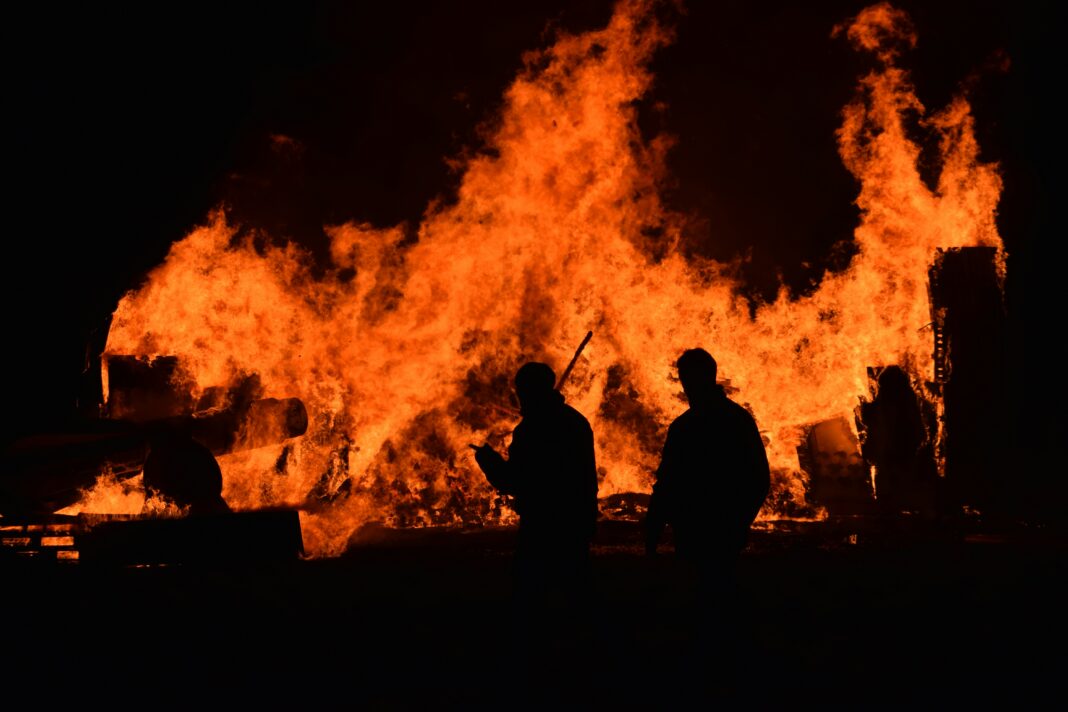In early January, a series of large and small fires started to form a ring of blazes around Los Angeles. The largest fire is the Palisades Fire, located along the Pacific Coast west of downtown Los Angeles. As of Tuesday, it has burned more than 23,400 acres and is 65 percent contained, according to Cal Fire. This fire has prompted evacuations along the Pacific Coast Highway, affecting areas including Pacific Palisades, Malibu, and Santa Monica.
The second largest fire is the Eaton Fire, which was situated in the San Gabriel Mountains north of Pasadena. It has burned over 14,000 acres, destroyed thousands of homes, and displaced tens of thousands of residents due to mandatory evacuations. As of Tuesday, containment of the Eaton Fire has reached 89 percent.
California, once a beautiful place filled with nature, is now engulfed in fires. These weren’t average backyard bonfires; they were massive infernos that scorch the state annually. There has been massive damage to the infrastructure of California as around 12,300 homes have been burnt down, affecting the US economy tremendously. The US lost 250 billion dollars in providing aid and infrastructure to the fires.
Wildfires are fires that spread rapidly through vegetation. They occur in grasslands and dry areas with a lot of vegetation. Lightning and volcanic eruptions cause wildfires, but humans can also cause them by lighting campfires, not discarding cigarettes properly, and falling electrical lines.

Why are these fires getting intense?
Dr. Crystal Kolden, Fire Science Expert, says in her research: “Rising global temperatures and prolonged drought have created a perfect storm for wildfire conditions. Climate change is no longer a distant threat—it’s here.”
Higher temperatures mean drier conditions, turning forests into tinderboxes. Vegetation and trees become super dry and easily ignitable.
California has been experiencing a mega-drought, meaning prolonged periods of extreme dryness. This has weakened the trees, making them more susceptible to disease and insect infestations, which can further increase fire risk. Additionally, stronger winds fan the flames, spreading fires rapidly across vast areas. These winds can also create incredibly dangerous fire whirlwinds.

What makes California Wildfires different?
California wildfires are unique due to its Mediterranean climate, which creates ideal fire conditions with hot, dry summers and mild winters, frequent droughts, and strong winds, like the Santa Ana, further intensify the risk. The state’s dense vegetation and tree die-offs from pests and drought add fuel, while its mountainous terrain accelerates fire spread.
Human factors, like the urban-wildland interface and power line failures, increase ignition risks. Climate change has extended the fire season, making mega-fires more common. These fires are intense, creating fire tornadoes and poor air quality.
How can we prevent these going forward?
Michael Gollner, a Fire Behavior Researcher at UC Berkeley, says, “Creating defensible spaces around homes and utilizing non-flammable building materials are crucial steps to enhance resilience against wildfires.” ~(The Atlantic)
We must take action on multiple fronts to prevent events like California wildfires. Controlled burns and vegetation management reduce fire fuel while creating defensible spaces around homes, which improves safety, and they can also create fire breaks around communities. Communities should prioritize fire-resistant building materials and emergency planning.
Reducing greenhouse gas emissions and promoting renewable energy can combat climate change, a key factor in increasing wildfires. Early detection systems like drones and satellites help catch fires before they spread. Public education on fire safety and strict regulations on risky activities are essential. Finally, government support and funding for forest management and firefighting resources are crucial to long-term wildfire prevention.
More from the Author: From Land to Sea— The Journey of Whales and Dolphins

Yameen Bin Yahya is an O-Level Biology student and an active member of the school Science Society. He’s passionate about exploring the wonders of zoological life and the universe. His curiosity drives him to dive into the intricate workings of the natural world and the mysteries beyond planet Earth.

